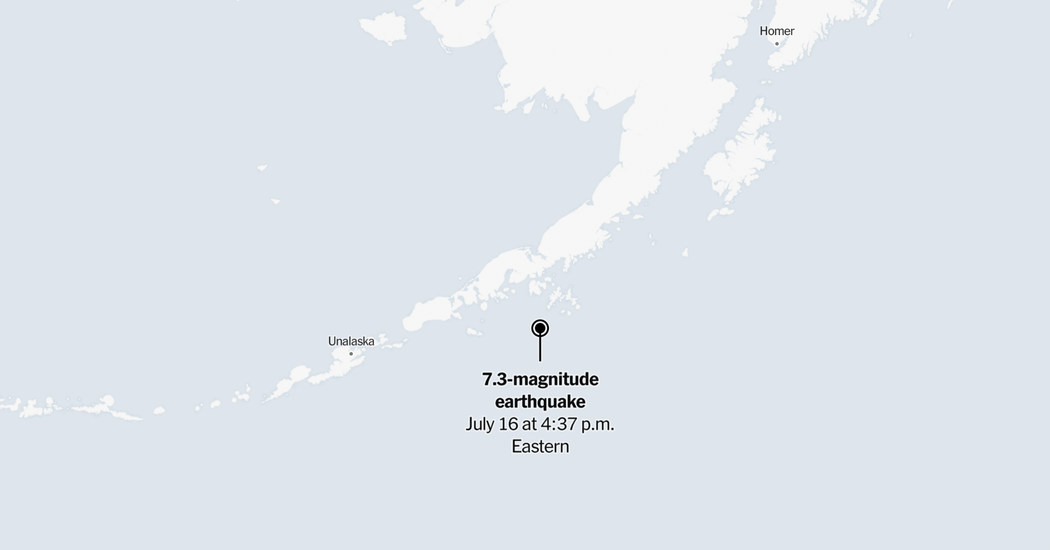Source: U.S. Tsunami Warning System Note: Sensor data is available only for selected locations, mainly in North America. The New York Times
A tsunami alert that had thousands of people in parts of coastal Alaska on edge on Wednesday afternoon was canceled after about two hours, the authorities said.
A tsunami warning that was then downgraded to an advisory was triggered by a 7.3-magnitude quake in the Gulf of Alaska on Wednesday, according to data from the U.S. Tsunami Warning System, which is part of the National Weather Service.
The National Tsunami Warning Center had said earlier that a tsunami had been confirmed, and that “some impacts are expected.”
Police Chief Benjamin Allen in Sand Point, Alaska, about 50 miles north of the quake’s epicenter, said that there had been no major reports of damage in the area, including to the harbor and the runway at the airport.
“Just things falling off of shelves,” Chief Allen said. “Thankfully, the tsunami warning was canceled.”
The stretch of coastal Alaska in the warning area is dotted with small communities, where people spent the hours after the earthquake awaiting a potential tsunami.
Before the warning was downgraded to an advisory, Susan Johnson, a manager at the Best Western Kodiak Inn on Kodiak Island, said that she was knocking on the doors of rooms to tell guests to evacuate.
Lauren Cojei, a public defender, was at her office in downtown Kodak when she received a tsunami warning alert on her phone. Ms. Cojei, 29, said she immediately left her office downtown and drove to her home, which is in a tsunami-safe zone, about 10 minutes away.
“I grew up in Michigan, so I’m not familiar with tsunamis,” Ms. Cojei said. “Definitely got my heart rate going.”
Ms. Cojei said she did not feel the earthquake. She described a sense of urgency in downtown as people in a line of cars were trying to head to higher ground. After the warning was downgraded, Ms. Cojei said she was able to breathe easier. Still, she said she was thankful the warning came with plenty of time to head to higher ground.
“I definitely feel a little bit better knowing that they’ve downgraded it,” Ms. Cojei said. “I’m just thankful that the system seemed to warn us pretty well in advance.”
Tsunamis are a series of long waves caused by a large and sudden displacement of water in the ocean, usually from a large earthquake on or below the ocean floor. Tsunamis radiate in all directions from the epicenter and can cause dangerous coastal flooding and powerful currents that can last for hours or days.
Aftershocks in the region
Several smaller aftershocks were recorded near the original quake, according to the United States Geological Survey.
Aftershocks can occur days, weeks or even years after the first earthquake. These events can be of equal or larger magnitude to the initial earthquake, and they can continue to affect already damaged locations.
As more information becomes available, officials may update, add or cancel tsunami alerts.
Camille Baker and Natasha Cornelissen contributed reporting.
